In 1872, William De Morgan made his commitment to becoming a ceramic designer. He gave up his successful and lucrative career as a designer of stained glass to establish what was arguably the most exclusive art pottery of the late-Victorian era.

V&A, E.412-1917 © Victoria and Albert Museum
So why did William De Morgan decide to set up his own pottery business? There were a number of reasons, but his drive to invent and innovate was at the forefront. Much later in his career, in 1892, he gave a lecture to the Society of Arts in which he describes turning from stained glass to ceramics, due to his noticing the lustre effect on stained glass, “The clue was furnished by the yellow stain of silver on glass. When over-fired this shows iridescence, which is often visible on the opaque yellow visible from the
outside on stained glass windows.” It seems it was this urge to investigate the history and technical process of lustre glazing that led him to set up his pottery.
The Chelsea Period
Upon the occasion of De Morgan blowing the roof off his rented home at Fitzroy Sq. experimenting with lustre glazing on Dutch blank tiles, he moved to Cheyne Row in Chelsea with his mother and sister and thus made the commitment to move to ceramic production. He illustrated this unfortunate incident in a letter to the artist Barbara Bodichon, which shows him working a kiln in the heat of the fire he caused.
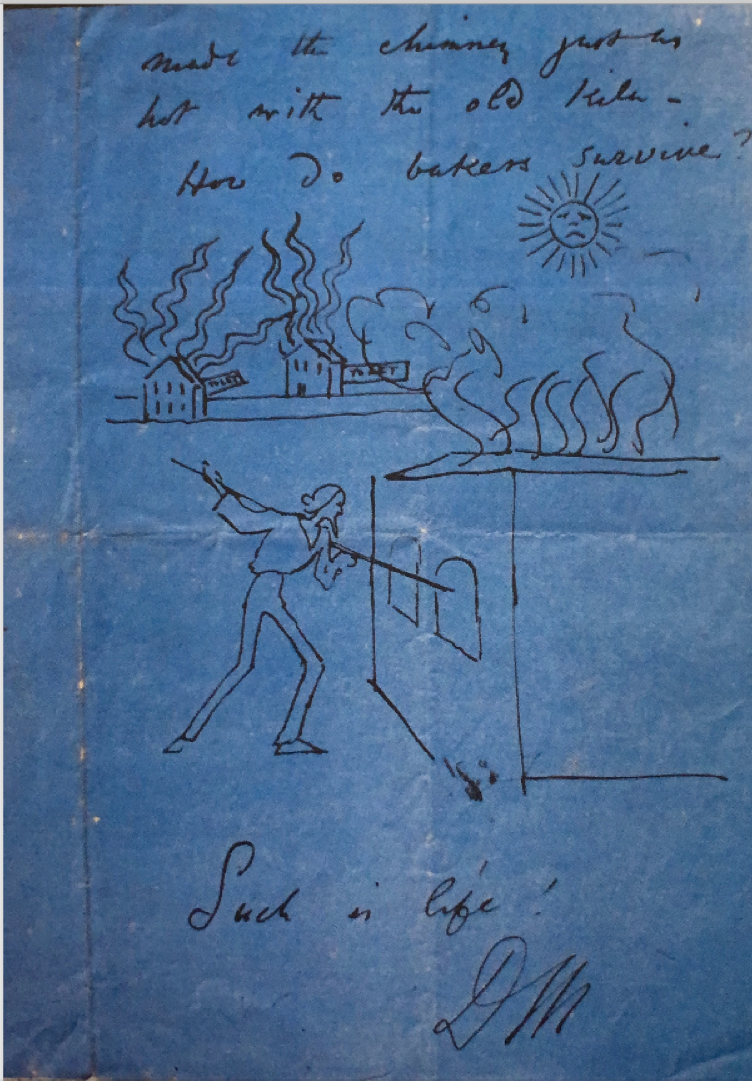
(C) Getty Archive
The Chelsea Pottery was busy and industrious, albeit on a domestic scale and a lively account of this period is provided by De Morgan’s one-time business manager, Reginald Blunt in his 1920 book ‘A Wonderful Village”. Blunt describes “The kiln at Orange House was built in an old coach- house which stood between the north side of the house itself and Upper Cheyne Row, the flue (with a faith unshaken by Fitzroy Square happenings, and apparently justified this time) being taken into one of the old chimneys of the house. The show- room, with a store-room at the back, occupied the whole ground floor. The decorators, including, beside the two Passengers, Mr. Babb, a young artist, Mrs. Beatty, and Dr. Reginald Thompson, who did some designs of much promise and ability, worked on the first floor, while some half-dozen girls were also employed on Dutch and other tiles, and had a room in one of the Upper Cheyne Row houses. The Chelsea tiles were mostly painted on a red clay body which came from Poole, Dorset ; the great dishes and plates for lustre work came from Davis”.
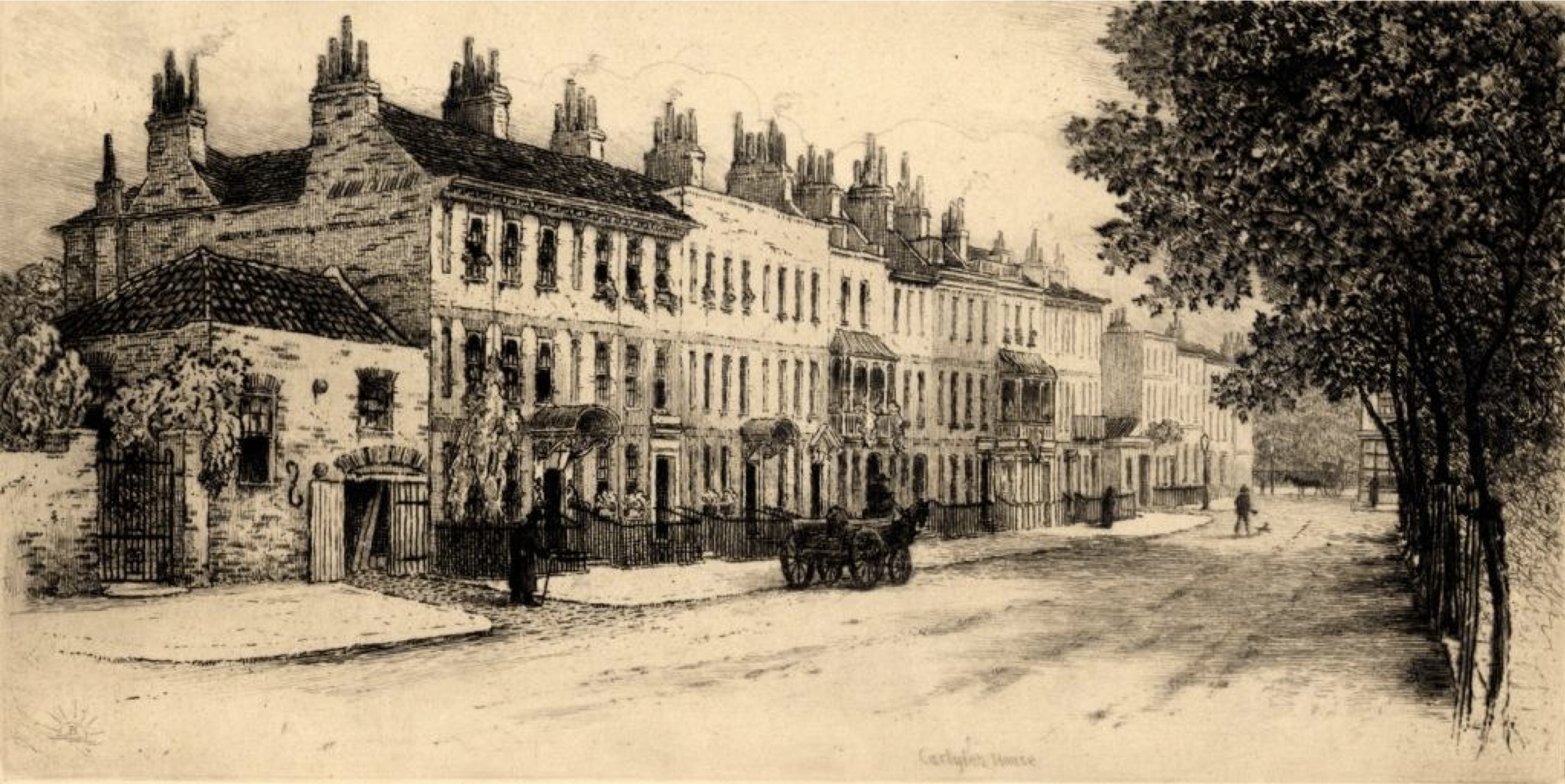
Cheyne Row, Chelsea (c.1870)
The Move to Merton
In no small part due to his good friend William Morris already being established at Merton Abbey with wallpaper and textile works, De Morgan made the move from Chelsea in 1882. The lack of space to fulfil his ambition was also a driving factor, since the designs he began creating at Merton Abbey were ambitious. He finally had the staff and space to have pots thrown to his exact specifications and his most experimental pieces date from this period. Staff employed at Chelsea, such as Charles and Fred Passenger, moved to Merton with De Morgan and these brothers were in fact faithful to De Morgan until the end of the business.
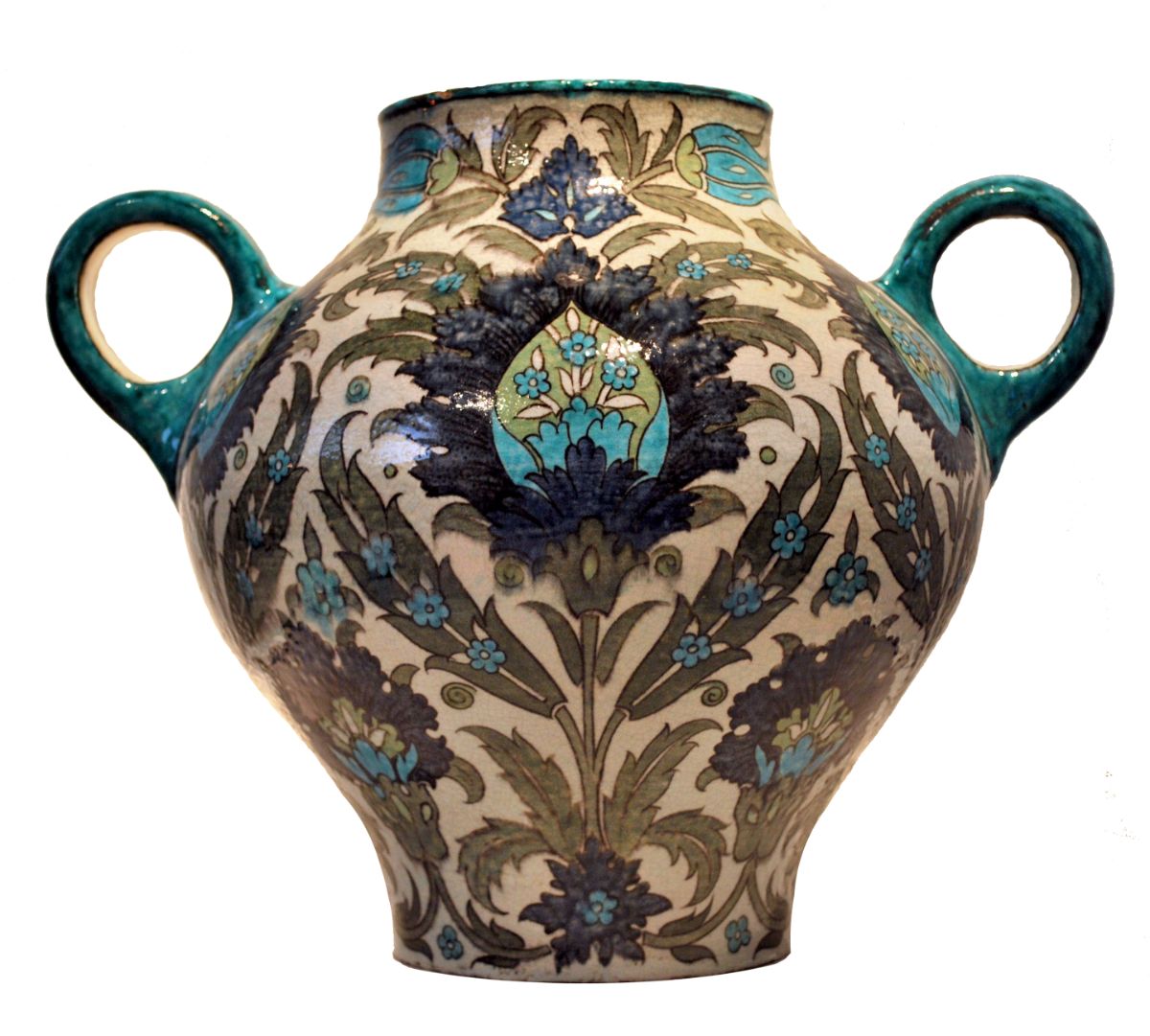
Two Handled Persian Vase, made at Merton Abbey
In 1886, De Morgan also set up a new showroom, and Gt Marlborough Street in London. Opposite Liberty & Co. and in a house with a ballroom, it must have been a wonderful place for clients to shop for their ceramics. He married Evelyn Pickering, the artist, in 1887 and the two would hold join exhibitions of their artworks there on Sundays which must have been wonderful to see.
Sands End Fulham
A new era for De Morgan & Co. came in 1888 when Evelyn De Morgan invested the significant amount of £3000 to the business, making her an equal partner with Halsey Ricardo, the famous Arts & Crafts Architect, who remained at the centre of De Morgan & Co. production for ten years. This left De Morgan as a creative director, keen to expand the possibilities of the new life breathed into his pottery business. He was instrumental in designing and developing the Fulham Pottery, active in designing everything from the buildings to the kilns.
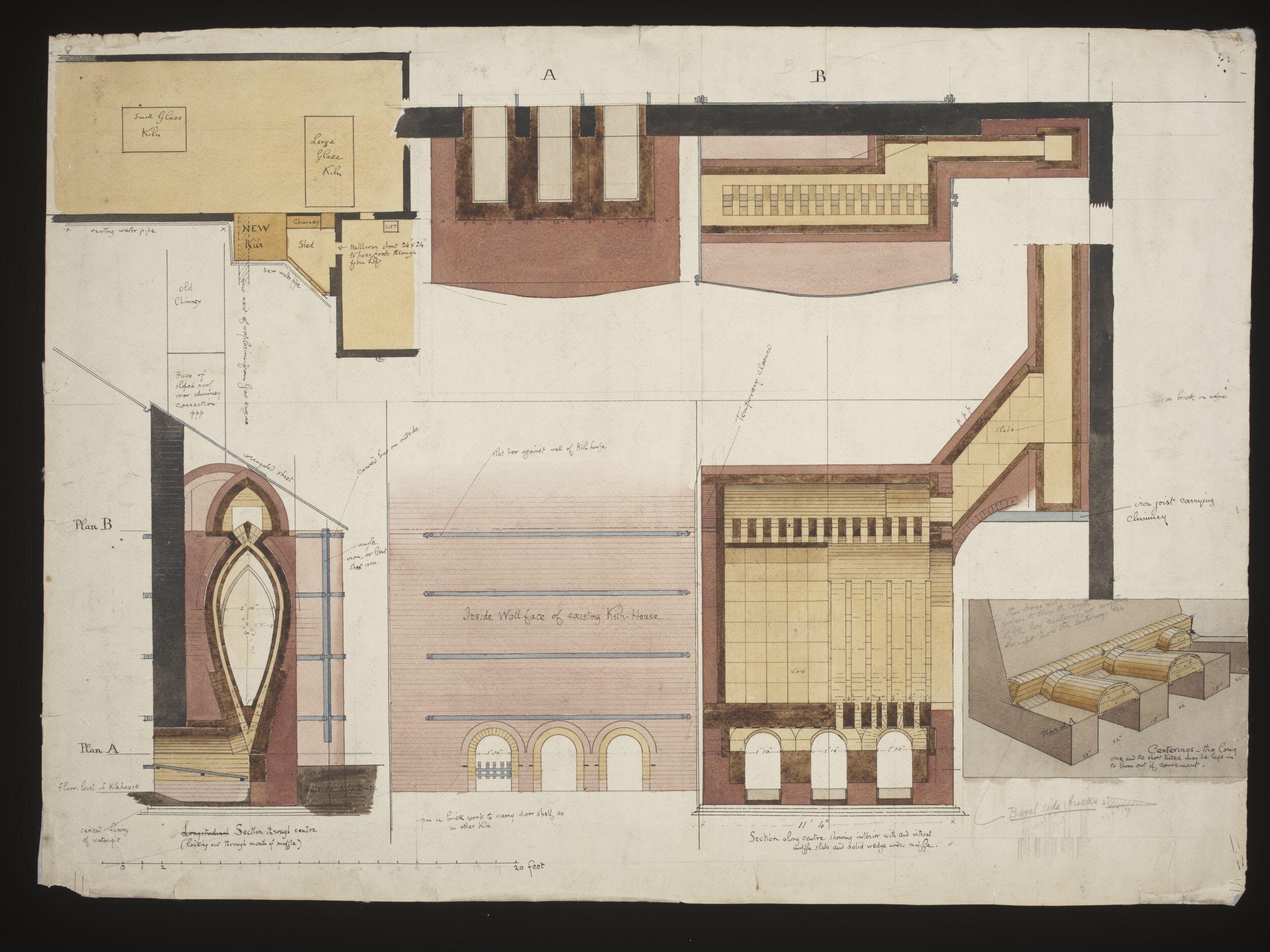
Design for the Kilns in Fulham, William De Morgan (V&A)
Sadly, the business was not a success financially. De Morgan’s distinct lack of interest in marketing, management and development of the business, plus his unchanging aesthetic, meant that by 1904 he had to pull out of the business, with it eventually folding altogether in 1907. By this time however, he could make the most unusual and exquisite lustreware which is still marvelled at by potters and audiences alike today. Known as his “Moonlight Suite” the three-coloured lustre glazing is nothing short of perfection and a lasting testament to the significant personal investment of De Morgan into his creative art pottery.
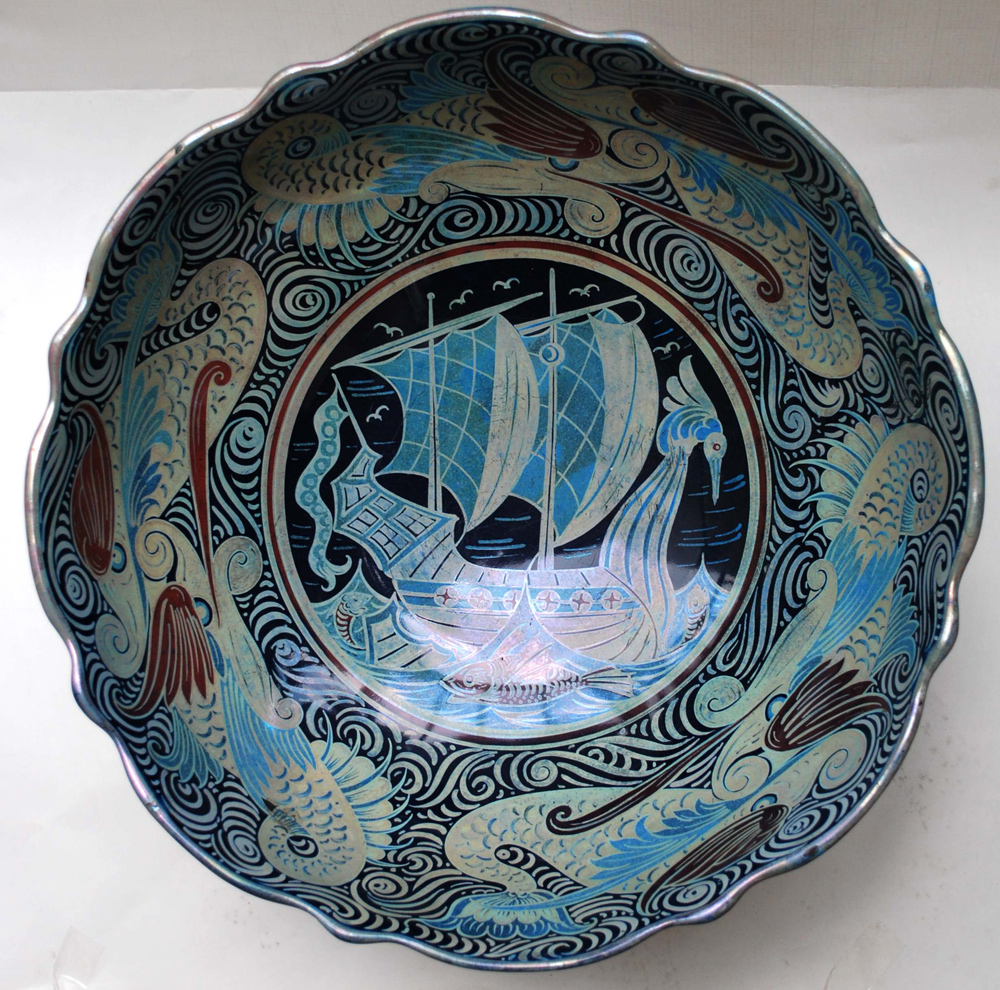
Moonlight Suite Galleon Punchbowl, link to collection item: C_WDM_0008





